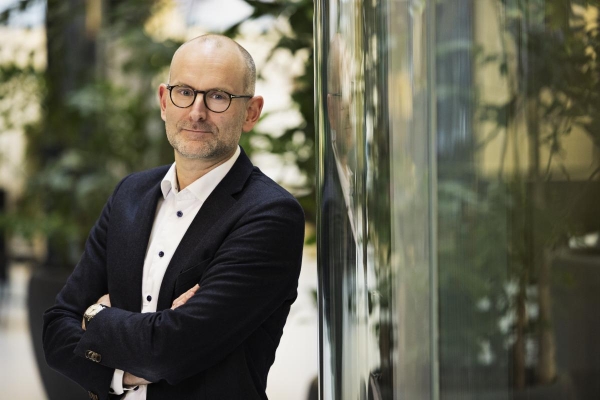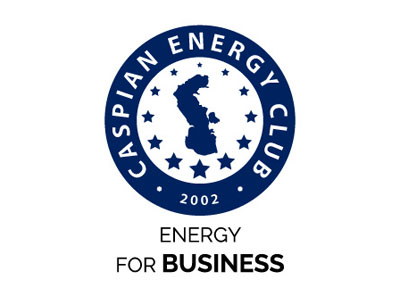Caspian Energy (CE): Denmark has for many years carried out a significant expansion of wind turbines and around 50% of the electricity consumption is covered by wind power. Why investing billions of dollars in building energy islands? Is it worth the costs?
Kristoffer Böttzauw, Director General of the Danish Energy Agency:It is correct that renewable energy the last decades has replaced fossil fuels and today almost half of the electricity in Denmark is generated by wind energy. Our latest projections show that before 2030, all electricity in Denmark will be based on renewables, with about 70 % wind energy.
However, we need wind energy to fulfill our climate targets in the long run, and to do so, Denmark has decided to expand offshore wind energy in Denmark even further. This will be done by, among other things, establishing two energy islands. The energy islands will be serving as hubs for electricity generation from the surrounding wind farms by collecting and distributing the electricity between countries connected by an electricity grid. The intention is to connect the energy islands to neighboring countries, step-by-step, along with increased energy demand.
The energy islands combined will initially have 5 GW of wind energy, potentially up to 12 GW and not only will the energy islands generate electricity; eventually they will produce e-fuels based on green electricity. The e-fuel will serve to enable a green transition of hard-to-abate sectors such as heavy transport, which is difficult to electrify, and change the fuels our trucks, ships and airplanes run on.
CE: Denmark is a small country and your contributions to the global GHG emissions are about 0.1%. Why have you adopted a climate law to cut emissions 70% by 2030 and become Carbon Neutral by 2050?
Kristoffer Böttzauw:With the 2015 Paris Agreement, the world is on a new trajectory towards sustainable development and a low-carbon economy. I think that delivering on the promise of Paris requires all countries to scale up renewable energy urgently and to use energy more efficiently. For more than 40 years the Danish Energy Agency has worked for a green transformation of the energy system in Denmark, and the experience gained can be used by other countries to achieve a green transition. The fact that the Danish share of global emissions of greenhouse gases only accounts for 0.1 percent means that our national efforts cannot stand alone.
Since 2012, the Danish Energy Agency has gradually expanded our cooperation with other countries and today, we partner with 16 countries that together cover more than 60% of the world’s GHG emissions. We hope that, by doing so, even though we are a small country, we are able to support the transition towards a greener, more sustainable, global economy.
CE: What can the other countries learn from Denmark regarding their transformation of the energy system?
Kristoffer Böttzauw:The experiences that Denmark has acquired through the years now can serve as inspiration to countries around the world, and that is why we bring Danish energy experts together with our counterparts in our partner countries to address the challenges of going from black to green. Together, we focus on identifying solutions that are realistic, cost-effective and reliable. The DEA supports its partner countries in sectors where Denmark has unique knowledge and solutions such as onshore and offshore wind, integration of renewable energy and power grid issues, district heating, energy efficiency, levelised cost of energy calculations and power system flexibility along with long-term modeling and scenario analyses.
Denmark can therefore offer sharing knowledge and experience on a wide range of topics within the energy sector. I think one of our most important cross-sector lessons learnt is that, for the green transition to take place, a stable political commitment with long-term targets and transparent regulation framework is a crucial key element. The industry needs to see potential long-term revenues with low political risks in order to commit for the necessary investments. That is why in Denmark we implement long-term targets: 70% reduction of CO2 emissions by 2030, independence from fossil fuel in 2050. We pave the way towards a green transition by creating confidence in the commitment of the Danish government to the green agenda.
CE: How far are you from achieving your objective to cut emissions?
Kristoffer Böttzauw:We have recently published a climate outlook and based on existing measures and policy already introduced the projections show that emissions of GHG in Denmark are expected to be reduced by 55 percent in 2030 compared with 1990. Thus, we still have to introduce further policy measures to achieve our 70 percent target but we have seen several political agreements during the last year and achieved significant progress bringing us closer to the target.
CE: What role do you see for the Danish Energy Agency in the Danish government energy policy system?
Kristoffer Böttzauw:The Danish Energy Agency is responsible for tasks linked to energy production, supply and consumption, as well as Danish efforts to reduce carbon emissions. We are also responsible for supporting the economical optimisation of utilities that in addition to energy includes water, waste and telecommunication. However, for the years to come our most important role will be to find solutions and to implement new policies which may keep Denmark on track to realize our ambitious climate target to reduce emissions of greenhouse gases by 70% in 2030 compared with 1990.
CE: Denmark has been an oil and gas producer for many years. What is the prospect for your activities in the North Sea?
Kristoffer Böttzauw:Yes, Denmark has been one of the largest oil and gas producers in the EU for decades and a net exporter of oil until 2017, but a couple of years ago we decided to ban all exploration and production of oil and gas onshore and in inland waters. Furthermore, due to our climate target and obligations the Danish Government - supported by a broad majority of political parties – last year cancelled all future licensing rounds and announced that 2050 will be the latest end date for Danish oil and gas production from the North Sea.
Thank you for the interview





